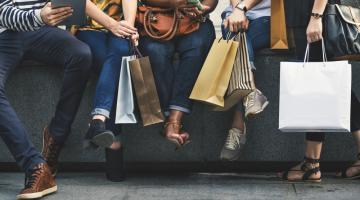
Shoppers heading into a store these days might feel like they’re experiencing déjà vu. As more Americans are vaccinated, mask-wearing is becoming less common, plexiglass barriers are being taken down, social-distancing floor decals are being removed and consumers are opening their wallets.
While it might be tempting to view this as a return to “business as usual,” the reality is that consumers’ interest in and expectations for in store shopping have been permanently altered by the COVID-19 pandemic. A new white paper from Deloitte, “What’s in Store in a Vaccinated World,” highlights the ways in which consumer priorities and expectations for physical shopping have shifted and what that means for retailers.
A year after the shutdowns forced many consumers and businesses to halt their day-to-day activities, it is evident that the pandemic did not permanently dampen in store shopping. When lockdowns eased and retail stores reopened during the summer of 2020, offline spending for many consumers reverted to pre-pandemic levels.
On average, three-quarters of shopping still takes place in physical retail stores, per Deloitte’s analysis. Predictions that COVID-19 would serve as the death knell for stores never became a reality — Bureau of Labor Statistics data shows that the number of store locations in the United States was up 4,700 year-over-year in Q4 of 2020, the highest quarterly store count number on record.
The availability of vaccines has spurred consumers’ interest in and comfort with the in-store experience. As of May 2021, 73 percent of consumers felt comfortable going to the store, up from 34 percent a year prior.
At the same time, consumers have higher expectations for in-store experiences and services. Behaviors that consumers initially adopted for safety reasons, such as curbside pick-up or contactless checkout, have settled into more permanent habits in the way shoppers think about browsing and buying. In fact, 83 percent of consumers now expect stores to offer flexible shopping and fulfillment options such as buy online, pick up in store.
As consumers increasingly expect to shop for items whenever and however they want, physical stores remain a critical asset for retailers to serve in-store customers face-to-face and also act as a site for omni-fulfillment capabilities. “The priorities and expectations of the post-pandemic customer have irrevocably shifted, requiring retailers to consider how to transform their physical store offerings to best serve their customers in this new normal,” says Rob Harrold, Deloitte Consulting LLP managing director.
So how do stores fulfill the expectations of the post-pandemic consumer? Retailers should rethink the role of bricks-and-mortar stores to serve customers across all channels. For example, BOPIS and curbside pickup surged during the pandemic, and many retailers intend to expand these services.
Sam’s Club’s Scan & Go and Kroger’s KroGo programs are notable examples of how retail stores can cater to consumers who are now more comfortable with mobile apps and contactless experiences. These technologies streamline the in-store experience, enabling consumers to have a contactless checkout while minimizing time waiting in line at the cash register.
Consumers’ return to stores also provides an opportunity for retailers to focus on differentiators. IKEA's new concept store, called the IKEA planning studio, will bring the store into the heart of major cities and allow consumers to explore small space living solutions. CVS Health is refining its HealthHUB concept to cater to the post-pandemic consumer, including offering direct-to-consumer telehealth visits. And Amazon is offering shoppers convenient and easy returns at Kohl’s and Whole Foods Market locations across the country.
Overall, pandemic-related shifts in consumer behavior are here to stay, and retailers will have to embrace new ways of doing business to retain and acquire customers. As the role of the store evolves in the post-pandemic world, retailers should double down on investments in their stores, technology and brand differentiators.


